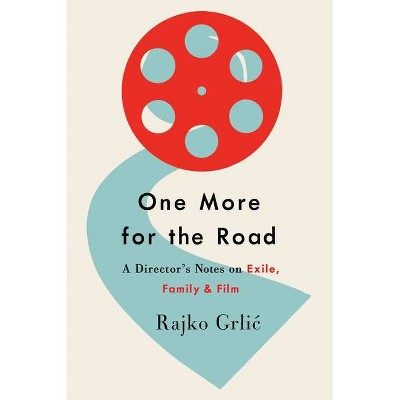Separate No More: The Long Road to Brown V. Board of Education (Scholastic Focus) - by Lawrence Goldstone (Hardcover)

Similar Products
Products of same category from the store
AllProduct info
<p/><br></br><p><b> About the Book </b></p></br></br>"Since 1896, in the landmark outcome of Plessy v. Ferguson, the doctrine of "separate but equal" had been considered acceptable under the United States Constitution. African American and white populations were thus segregated, attending different schools, living in different neighborhoods, and even drinking from different water fountains -- so long as the separated facilities were deemed of comparable quality. However, as African Americans found themselves lacking opportunity, barred from the educational, legal, and personal resources readily available to white people, and living under the constant menace of lawless mob violence, it was becoming increasingly apparent that segregation was not only unjust, but dangerous. Fighting to turn the tide against racial oppression, revolutionaries rose up all over America, from Booker T. Washington to W. E. B. Du Bois. They formed coalitions of some of the greatest legal minds and activists, who carefully strategized how to combat the racist judicial system, picking and choosing which cases to take on and how to tackle them. These activists would not always win, in some instances suffering great setbacks, but, ever resilient, they continued to push forward. These efforts would be rewarded in the groundbreaking cases of 1952-1954 known collectively as Brown v. Board of Education of Topeka, in which the U. S. Supreme Court would decide, once and for all, the legality of segregation -- and on which side of history the United States would stand. In this thrilling examination of the path to Brown v. Board of Education, Constitutional law scholar Lawrence Goldstone highlights the key trials and players in the fight for integration. Written with a deft hand, this story of social justice will remind readers, young and old, of the momentousness of the segregation hearings"--<p/><br></br><p><b> Book Synopsis </b></p></br></br><b>Critically acclaimed author Lawrence Goldstone offers an affecting portrait of the road to the landmark <i>Brown v. Board of Education</i> case, which significantly shaped the United States and effectively ended segregation. </b><p></p><p>Since 1896, in the landmark outcome of <i>Plessy v. Ferguson</i>, the doctrine of separate but equal had been considered acceptable under the United States Constitution. African American and white populations were thus segregated, attending different schools, living in different neighborhoods, and even drinking from different water fountains. However, as African Americans found themselves lacking opportunity and living under the constant menace of mob violence, it was becoming increasingly apparent that segregation was not only unjust, but dangerous.</p><p>Fighting to turn the tide against racial oppression, revolutionaries rose up all over America, from Booker T. Washington to W. E. B. Du Bois. They formed coalitions of some of the greatest legal minds and activists, who carefully strategized how to combat the racist judicial system. These efforts would be rewarded in the groundbreaking cases of 1952-1954 known collectively as <i>Brown v. Board of Education of Topeka</i>, in which the US Supreme Court would decide, once and for all, the legality of segregation -- and on which side of history the United States would stand.</p><p>In this thrilling examination of the path to<i> Brown v. Board of Education</i>, Constitutional law scholar Lawrence Goldstone highlights the key trials and players in the fight for integration. Written with a deft hand, this story of social justice will remind readers, young and old, of the momentousness of the segregation hearings.</p><p/><br></br><p><b> Review Quotes </b></p></br></br><br><p><b>Praise for <i>Stolen Justice</i>: </b></p><p>* Goldstone has provided new and compelling insight into the societal impact of the U.S. Supreme Court's decisions related to voting rights. A must-buy for all high school collections. -- <i>School Library Journal</i>, starred review</p><p>[A] strong, illuminating addition to the study of American history. -- <i>Publishers Weekly</i></p><p>Goldstone resurrects decades-old court cases, bringing new life to the past by clearly connecting yesterday to today and invoking current questions about which Americans have participatory access to democracy... A critical work. -- <i>Kirkus Reviews</i></p><p><b>Praise for <i>Unpunished Murder</i>: </b></p><p>A <i>Booklist </i>Youth Editors' Choice selection</p><p>* A gripping story and a well-informed perspective on American history. Spotlighting an event seldom discussed in books for young people, Goldstone provides a complex, useful historical context for understanding issues surrounding race and justice. -- <i>Booklist</i>, starred review</p><p>* The book is, in large part, the story of how racism evolves, persisting in laws and politics despite major social advances. -- <i>The Horn Book</i>, starred review</p><p>This book shines a light on a shameful sea change moment in U.S. history... Difficult and necessary. -- <i>Kirkus Reviews</i></p><p>This is a unique look at not only the massacre in question, but also at the history and workings of the Supreme Court of the United States... This work shows a more complete history of the Reconstruction era and the way the highest levels of government were affected by a country trying to heal and make amends. -- <i>School Library Connection</i></p><br><p/><br></br><p><b> About the Author </b></p></br></br>Lawrence Goldstone is the author of <i>Separate No More: The Long Road to Brown vs. Board of Education</i>, a Junior Library Guild selection, which <i>Kirkus</i> called engaging and accessible in a starred review; <i>Stolen Justice: The Struggle for African American Voting Rights</i>, which <i>School Library Journal</i> declared in a starred review: A must-buy for all high school collections; and <i>Unpunished Murder: Massacre at Colfax and the Quest for Justice</i>, which <i>Booklist</i>'s starred review called gripping . . . and a well-informed perspective on American history. He is also the author of more than a dozen books for adults, including four on Constitutional law. He lives in Sagaponack, New York, with his wife, medieval and Renaissance historian Nancy Goldstone.
Price History
Cheapest price in the interval: 10.99 on October 22, 2021
Most expensive price in the interval: 10.99 on December 20, 2021
Price Archive shows prices from various stores, lets you see history and find the cheapest. There is no actual sale on the website. For all support, inquiry and suggestion messages communication@pricearchive.us




















